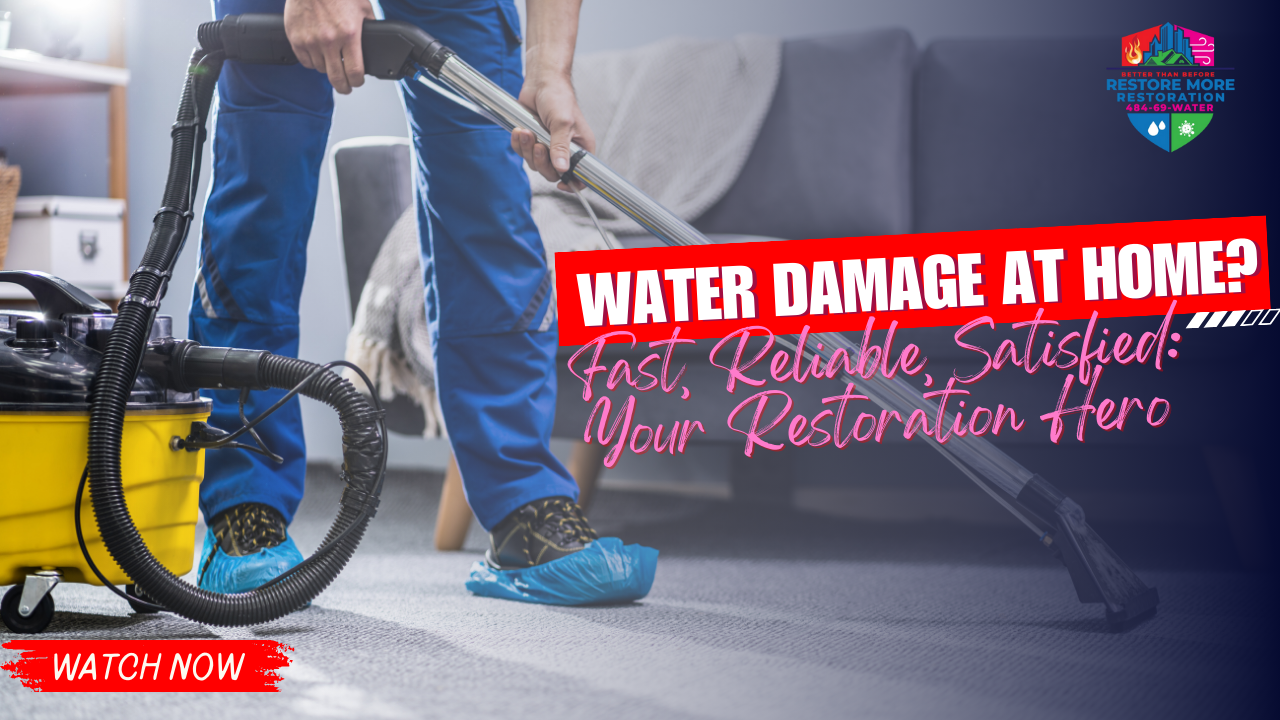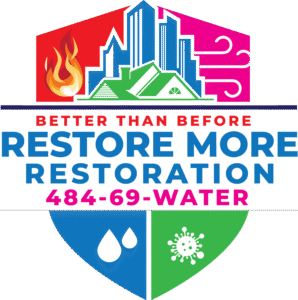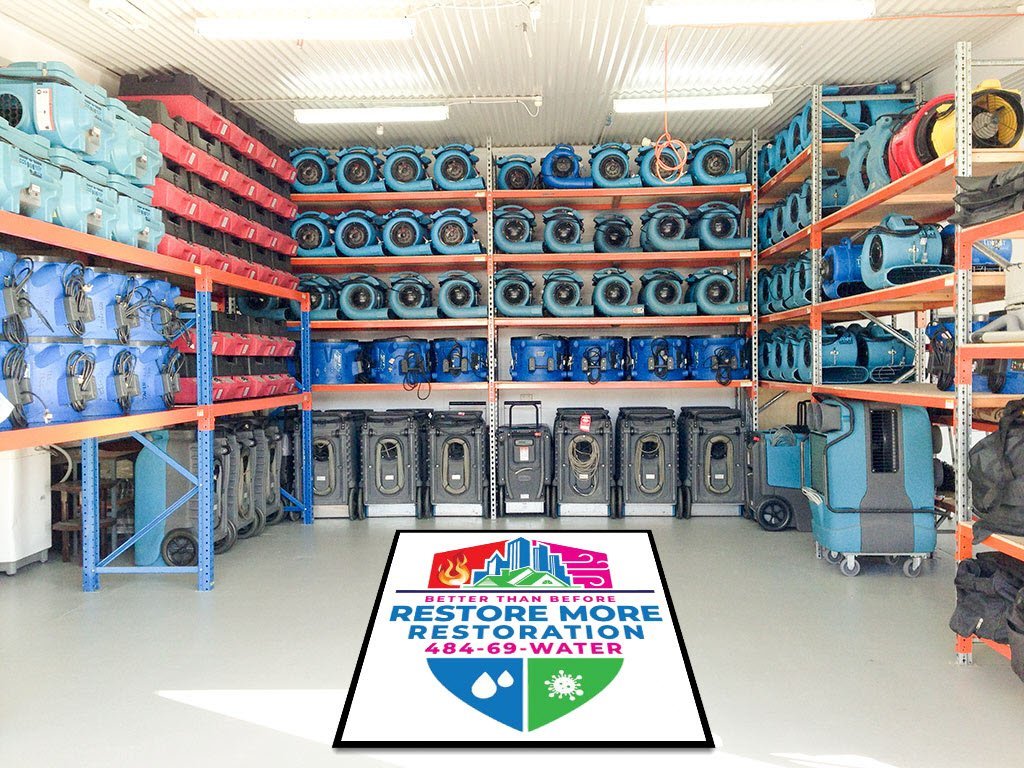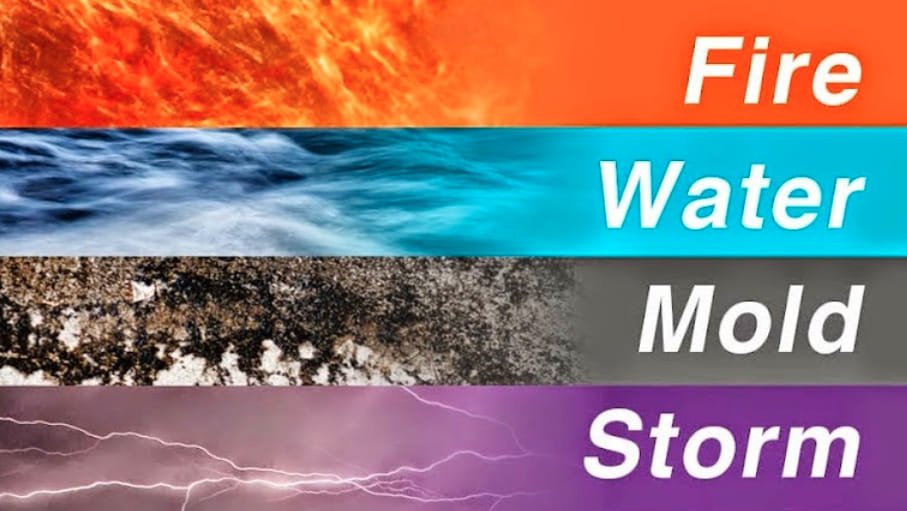Essential Water Damage Prevention Tips for Garnet Valley Homeowners
Water damage can strike any Garnet Valley home without warning, causing thousands of dollars in damage and disrupting family life for weeks or months. While some water damage events are unavoidable, many can be prevented through proactive maintenance, seasonal preparation, and understanding the unique challenges that Delaware County’s climate and geography present to local homeowners. By implementing these comprehensive prevention strategies, Garnet Valley residents can significantly reduce their risk of experiencing costly water damage while protecting their most valuable investment.
As experts in water damage restoration serving the Garnet Valley community, we’ve seen firsthand how preventable many water damage situations are. Our partnership with RestoreMore365 has given us extensive experience in both restoration and prevention, and we’re committed to helping our neighbors avoid the stress and expense of water damage through education and proactive maintenance strategies.
Understanding Garnet Valley’s Water Damage Risks
Garnet Valley’s location in southeastern Pennsylvania creates specific water damage risks that homeowners should understand and prepare for. According to the Federal Emergency Management Agency, understanding local risk factors is the first step in effective water damage prevention.
Climate-Related Risk Factors
Seasonal Weather Patterns: Garnet Valley experiences four distinct seasons, each presenting unique water damage risks. Spring brings heavy rainfall and rapid snowmelt that can overwhelm drainage systems. Summer storms can produce intense rainfall in short periods, while fall brings leaf accumulation that can clog gutters and drains. Winter freezing temperatures create risks for frozen pipes and ice dam formation.
Brandywine Creek Watershed: Many Garnet Valley properties are located within the Brandywine Creek watershed, which can experience flooding during heavy rainfall events. Understanding your property’s proximity to waterways and flood zones helps inform appropriate prevention strategies.
Soil and Drainage Characteristics: Delaware County’s clay-heavy soils can create drainage challenges, particularly during periods of heavy rainfall. Poor drainage around foundations can lead to basement flooding and foundation water intrusion.
Housing-Specific Risk Factors
Age and Construction Type: Garnet Valley features a mix of housing ages and construction types, from historic properties to modern developments. Older homes may have aging plumbing systems, while newer homes might have different vulnerabilities related to construction techniques and materials.
Basement and Foundation Characteristics: Many Garnet Valley homes feature basements that are susceptible to water intrusion from various sources. Understanding your home’s foundation type and basement characteristics helps inform appropriate prevention strategies.
Landscaping and Grading: Property grading and landscaping significantly impact water drainage around homes. Improper grading can direct water toward foundations, while appropriate landscaping can help manage water flow and prevent damage.
Seasonal Water Damage Prevention Strategies
Spring Prevention Checklist
Roof and Gutter Maintenance: Spring is the ideal time for comprehensive roof and gutter inspection and maintenance. Remove debris from gutters and downspouts, check for winter damage to roofing materials, and ensure proper drainage away from the foundation. Look for loose or damaged shingles, cracked flashing, and signs of ice dam damage from winter weather.
Foundation and Basement Inspection: Inspect foundation walls for cracks or signs of water intrusion that may have developed during winter freeze-thaw cycles. Check basement walls for moisture, efflorescence, or other signs of water problems. Test sump pump operation before spring rains arrive.
Plumbing System Check: Inspect all plumbing fixtures and connections for winter damage. Check outdoor faucets and irrigation systems for freeze damage. Look for signs of leaks in basements, crawl spaces, and around water heaters and appliances.
Drainage and Grading Assessment: Evaluate property drainage and grading to ensure water flows away from the foundation. Clear debris from drainage systems and ensure downspout extensions direct water at least six feet from the foundation.
Summer Prevention Strategies
Storm Preparation: Summer storms can produce intense rainfall and damaging winds. Trim trees and remove dead branches that could fall and damage roofs or siding. Ensure gutters and downspouts are securely attached and functioning properly. Consider installing surge protectors to protect sump pumps and other equipment during power outages.
Air Conditioning Maintenance: Air conditioning systems can create water damage through condensate line clogs or equipment malfunctions. Regularly check and clean condensate drains, replace filters, and ensure proper drainage from outdoor units.
Irrigation System Management: Properly maintained irrigation systems prevent both water waste and potential damage from leaks or overwatering. Regularly inspect sprinkler heads, check for leaks in irrigation lines, and adjust watering schedules based on rainfall.
Humidity Control: Summer humidity can create moisture problems in basements and crawl spaces. Use dehumidifiers to maintain appropriate humidity levels and prevent mold growth and moisture-related damage.
Fall Prevention Preparation
Gutter and Downspout Cleaning: Fall leaf accumulation can quickly clog gutters and downspouts, leading to water overflow and potential damage. Clean gutters regularly throughout the fall season and consider installing gutter guards to reduce maintenance requirements.
Heating System Preparation: Prepare heating systems for winter operation by having furnaces and boilers professionally serviced. Check for leaks in heating system pipes and ensure proper drainage from condensate systems.
Outdoor Water System Winterization: Disconnect and drain garden hoses, shut off outdoor water valves, and drain irrigation systems to prevent freeze damage. Insulate outdoor faucets and exposed pipes in unheated areas.
Window and Door Sealing: Check and repair caulking around windows and doors to prevent water intrusion during winter storms. Ensure proper drainage from window wells and door thresholds.
Winter Prevention Measures
Pipe Freeze Prevention: Maintain adequate heating in all areas of the home, including basements and crawl spaces. Insulate pipes in unheated areas and allow faucets to drip during extreme cold periods. Know the location of your main water shut-off valve in case of emergency.
Ice Dam Prevention: Ensure adequate attic insulation and ventilation to prevent ice dam formation. Remove snow from roofs when accumulation becomes excessive, and clear ice and snow from gutters and downspouts.
Emergency Preparedness: Maintain emergency supplies including flashlights, batteries, and emergency contact information. Know how to shut off water, electricity, and gas in case of emergency. Keep contact information for emergency restoration services readily available.
Heating System Monitoring: Monitor heating systems for proper operation and address any issues immediately to prevent freeze damage. Ensure adequate fuel supply for heating systems and backup generators.
Plumbing System Prevention
Regular Inspection and Maintenance
Monthly Plumbing Checks: Conduct monthly inspections of all visible plumbing fixtures and connections. Look for signs of leaks, corrosion, or damage around toilets, sinks, tubs, and appliances. Check water pressure and flow rates for changes that might indicate developing problems.
Annual Professional Inspections: Schedule annual plumbing inspections with qualified professionals to identify potential problems before they become emergencies. Professional inspections can identify hidden leaks, aging components, and system inefficiencies.
Water Heater Maintenance: Regular water heater maintenance prevents failures that can cause significant water damage. Flush water heaters annually, check temperature and pressure relief valves, and inspect for signs of corrosion or leaks.
Appliance Connection Monitoring: Regularly inspect connections to washing machines, dishwashers, refrigerators, and other water-using appliances. Replace supply hoses every five years or when signs of wear become apparent.
Pipe Protection Strategies
Insulation and Protection: Insulate pipes in unheated areas including basements, crawl spaces, attics, and exterior walls. Use pipe insulation, heat tape, or other protection methods appropriate for your specific situation.
Pressure Management: Install pressure-reducing valves if water pressure exceeds 80 PSI to prevent stress on plumbing systems. High water pressure can cause premature failure of pipes, fixtures, and appliances.
Leak Detection Systems: Consider installing water leak detection systems that can automatically shut off water supply when leaks are detected. These systems provide early warning and can prevent extensive damage when problems occur.
Shut-Off Valve Accessibility: Ensure all shut-off valves are easily accessible and functioning properly. Know the location of individual fixture shut-offs as well as the main water supply shut-off.
Foundation and Basement Protection
Drainage and Waterproofing
Exterior Drainage Management: Proper exterior drainage is critical for preventing basement water problems. Ensure gutters and downspouts direct water away from the foundation, maintain proper grading around the home, and consider installing French drains or other drainage systems if needed.
Foundation Waterproofing: Apply appropriate waterproofing treatments to foundation walls and consider professional waterproofing systems for homes with chronic moisture problems. Seal foundation cracks promptly to prevent water intrusion.
Sump Pump Maintenance: Test sump pumps regularly and maintain backup power systems for operation during power outages. Clean sump pits annually and ensure proper discharge away from the foundation.
Window Well Protection: Maintain proper drainage in window wells and ensure covers are in good condition. Clear debris regularly and check for proper sealing around basement windows.
Moisture Control
Humidity Management: Maintain appropriate humidity levels in basements and crawl spaces using dehumidifiers when necessary. Proper humidity control prevents mold growth and moisture-related damage.
Ventilation Improvement: Ensure adequate ventilation in basements and crawl spaces to prevent moisture accumulation. Install exhaust fans or improve natural ventilation as needed.
Vapor Barrier Installation: Consider installing vapor barriers in crawl spaces and other areas prone to moisture problems. Proper vapor barriers prevent ground moisture from entering living spaces.
Drainage System Maintenance: Maintain interior drainage systems including floor drains and ensure they remain clear and functional. Regular maintenance prevents backups and flooding.
Roof and Gutter Maintenance
Roof System Care
Regular Roof Inspections: Conduct visual roof inspections from the ground at least twice yearly and after major storms. Look for missing or damaged shingles, damaged flashing, and signs of wear or deterioration.
Professional Roof Maintenance: Schedule professional roof inspections every 2-3 years or after significant weather events. Professional inspections can identify problems not visible from ground level.
Flashing and Seal Maintenance: Maintain proper sealing around roof penetrations including chimneys, vents, and skylights. Replace damaged flashing and caulking promptly to prevent water intrusion.
Attic Ventilation: Ensure proper attic ventilation to prevent ice dams and moisture problems. Adequate ventilation helps maintain proper temperatures and prevents condensation issues.
Gutter System Optimization
Regular Cleaning Schedule: Clean gutters and downspouts at least twice yearly and more frequently during heavy leaf-fall periods. Remove all debris and check for proper water flow.
Gutter Repair and Replacement: Repair or replace damaged gutter sections promptly to maintain proper drainage. Ensure gutters are properly sloped and securely attached to the home.
Downspout Extensions: Install downspout extensions to direct water at least six feet away from the foundation. Consider underground drainage systems for areas where surface drainage is inadequate.
Gutter Guard Installation: Consider installing gutter guards to reduce maintenance requirements and improve drainage performance. Choose appropriate guard types for your specific situation and local conditions.
Appliance and System Monitoring
Water-Using Appliance Care
Washing Machine Maintenance: Inspect washing machine hoses regularly and replace them every five years or when signs of wear appear. Use stainless steel braided hoses for improved durability and reliability.
Dishwasher Inspection: Check dishwasher connections and seals regularly for signs of leaks or wear. Ensure proper drainage and clean filters according to manufacturer recommendations.
Refrigerator Water Systems: Maintain refrigerator water lines and ice maker connections. Replace filters according to manufacturer schedules and inspect for leaks regularly.
Water Heater Monitoring: Monitor water heaters for signs of leaks, corrosion, or other problems. Replace aging water heaters before failure occurs to prevent damage.
HVAC System Water Management
Air Conditioning Drainage: Ensure proper drainage from air conditioning systems and clean condensate drains regularly. Check for clogs or backups that could cause water damage.
Humidifier Maintenance: Maintain whole-house humidifiers according to manufacturer recommendations and ensure proper drainage and operation.
Ductwork Inspection: Inspect ductwork for condensation problems and ensure proper insulation in unconditioned spaces. Address moisture problems promptly to prevent damage.
Emergency Preparedness and Response
Emergency Planning
Emergency Contact Information: Maintain current contact information for emergency restoration services, including RestoreMore365, which provides 24/7 emergency response for water damage situations in Garnet Valley.
Utility Shut-Off Knowledge: Know the location and operation of main water, electrical, and gas shut-offs. Ensure all family members understand emergency shut-off procedures.
Emergency Supply Kit: Maintain emergency supplies including flashlights, batteries, tarps, and basic tools for emergency water damage mitigation.
Insurance Documentation: Keep insurance policy information and important documents in waterproof storage and maintain current documentation of home contents and improvements.
Early Detection Systems
Water Leak Detection: Consider installing water leak detection systems that provide early warning of plumbing problems. These systems can prevent extensive damage by providing immediate notification of leaks.
Moisture Monitoring: Use moisture meters or monitoring systems in areas prone to water problems such as basements and crawl spaces.
Smart Home Integration: Consider smart home systems that can monitor for water leaks, temperature changes, and other conditions that might indicate developing problems.
Regular Monitoring Routines: Establish regular monitoring routines for checking potential problem areas and addressing issues before they become emergencies.
Professional Maintenance and Inspections
When to Call Professionals
Annual Inspections: Schedule annual professional inspections for plumbing, roofing, and HVAC systems to identify potential problems before they cause damage.
Specialized Services: Use professional services for specialized maintenance such as sewer line cleaning, chimney inspection, and foundation waterproofing.
Emergency Response: Know when to call for emergency professional help and maintain contact information for reliable emergency services.
Preventive Maintenance: Invest in professional preventive maintenance to avoid costly emergency repairs and water damage.
Choosing Quality Service Providers
Licensing and Insurance: Ensure all service providers are properly licensed and insured for work in Pennsylvania and Delaware County.
Local Experience: Choose service providers with experience in Garnet Valley and understanding of local conditions and challenges.
References and Reviews: Check references and reviews from other local customers to ensure quality service and reliability.
Emergency Availability: Ensure service providers offer emergency response when needed for urgent situations.
Cost-Effective Prevention Strategies
DIY Maintenance Tasks
Regular Cleaning: Many prevention tasks such as gutter cleaning, filter replacement, and basic inspections can be performed by homeowners with appropriate safety precautions.
Simple Repairs: Basic repairs such as caulking, weatherstripping replacement, and minor plumbing fixes can often be performed by homeowners.
Monitoring and Documentation: Homeowners can perform regular monitoring and documentation of home systems to identify problems early.
Seasonal Preparation: Many seasonal preparation tasks can be performed by homeowners with proper knowledge and tools.
Professional Investment Priorities
Critical System Maintenance: Prioritize professional maintenance for critical systems such as roofing, plumbing, and foundation waterproofing.
Specialized Equipment: Use professionals for tasks requiring specialized equipment or expertise such as sewer line inspection or roof repairs.
Safety Considerations: Use professionals for any tasks involving safety risks such as electrical work or high roof access.
Warranty Protection: Use professional services to maintain warranties on major systems and equipment.
Insurance Considerations
Coverage Understanding
Policy Review: Regularly review homeowner’s insurance policies to understand coverage for different types of water damage and ensure adequate protection.
Flood Insurance: Consider flood insurance for properties in flood-prone areas, as standard homeowner’s insurance typically excludes flood damage.
Documentation Requirements: Understand insurance documentation requirements and maintain appropriate records of home improvements and maintenance.
Claim Prevention: Implement prevention strategies that may qualify for insurance discounts and help prevent claims that could affect future coverage.
Risk Mitigation
Preventive Measures: Document preventive measures taken to reduce water damage risks, as this information may be valuable for insurance purposes.
Professional Maintenance: Maintain records of professional maintenance and inspections to demonstrate proper home care.
Upgrade Documentation: Document home improvements and upgrades that reduce water damage risks such as new roofing, plumbing, or waterproofing systems.
Emergency Response: Understand insurance requirements for emergency response and mitigation to ensure coverage for necessary actions.
Conclusion
Water damage prevention requires ongoing attention and proactive maintenance, but the investment in prevention is far less than the cost of restoration and repair. By implementing these comprehensive prevention strategies, Garnet Valley homeowners can significantly reduce their risk of water damage while protecting their homes and families.
Remember that prevention is always more cost-effective than restoration. However, when water damage does occur despite your best prevention efforts, professional restoration services are available to help minimize damage and restore your home quickly and effectively.
For more information about water damage prevention and restoration services, visit our comprehensive guides on water damage restoration, emergency water damage response, basement water damage prevention, flood restoration, and storm damage cleanup. These resources provide detailed information about both prevention strategies and professional restoration services available to Garnet Valley residents.
Stay proactive with your home maintenance, and don’t hesitate to seek professional help when needed. Your home is your most valuable investment, and proper water damage prevention helps protect that investment for years to come.




